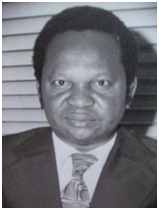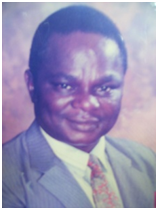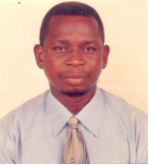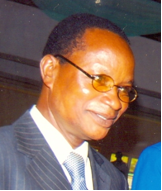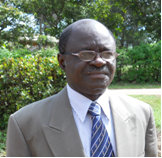History : Department of Crop Protection and Environmental Biology
| Attachment | Size |
|---|---|
| Prof. Sola Ogunyemi.png (61.14 KB) | 61.14 KB |
History of the Department
VISION
To be a world class center of excellence in plant health management, and ecosystem and environmental sustainability.
MISSION
- To expand the frontiers of knowledge in crop protection and improvement, and environmental management to enhance agricultural productivity.
- To produce quality graduates who are knowledgeable in crop diseases and pests, and environmental management.
- To positively impact the society through excellent pest and environmental diagnostics and management services.
HISTORY
The Department evolved in 1962 as one of the four pioneer Departments from the then one-Department Faculty of Agriculture founded in 1949. The Department was under the nomenclature Agricultural Biology at inception up to 1995 when the Senate of the University of Ibadan approved the current name Crop Protection and Environmental Biology (CPEB) to reflect the multidisciplinary nature of its teaching and research pursuits.
Agriculture, as well as supplying the basic needs of man, is the basis of the economy of Nigeria. It consists of the production of man’s requirements from the land by means of growing plants and rearing animals. The Department of CPEB looks into biology of the organisms that are of importance to crops and forest trees, their control mechanisms and impacts of the control mechanisms on environment and ecosystem to ensure sustainable use of resources. These organisms include fungi, bacteria, virus, nematodes, insect pests, vertebrate pests and weeds. By a fuller understanding of the way of life of these organisms progress may be made in increasing the productivity of crops and the overall production of the various agricultural products.
The Department has ecology as the central theme of its teaching and research with the study areas that include;
- Entomology,
- Mycology,
- Phytovirology,
- Phytobacteriology,
- Nematology,
- Crop physiology,
- Plant/weed ecology,
- Genetics and plant breeding, and
- Toxicology.
This multidisciplinary set-up of the department offers rare opportunity to train students and conduct researches with integrated approach, with the focal point of solving problems of pests and diseases of crops, and protecting the environment to enhance agricultural productivity. Also, studies are undertaken in the areas of sericulture, apiculture, mushroom production and remediation of contaminated sites.
The Department of CPEB tries to achieve the above aims in two ways. First, it teaches undergraduates. The department organizes some second-year courses in Agricultural and Forestry Biology in which all students in the Faculty are introduced to the fundamental biology of organisms of Agricultural and Forestry. The Department trains students at the undergraduate and postgraduate levels, leading to the award of B.Agric., M.Sc., M.Phil. and Ph.D degrees in various areas of crop protection and improvement. Secondly, the department conducts research into many aspects of agricultural biology. This research is carried out by the lecturers or by the undergraduate (final year) and postgraduate research students under the supervision of an appointed lecturer.
The Insect Museum in the department remains the best and the Centre of excellence in Africa South of the Sahara. Recently, a Pests and Diseases Diagnostic Laboratory was set up in the Department for proper diagnosis of diseases encountered on the fields by farmers and extension agents. The Department now has a tissue culture laboratory and the Molecular Biology Laboratory is nearing completion. The Department is presently in partnership with the University on commercial pest control and honey production ventures.
The Department is structured into three units to integrate the study areas and assist the Head in the administration task. The units, headed by Chiefs, are Entomology, Phytopathology and Environmental Biology.
The personnel and teaching/research facilities in the Department are as follows:
Number of Academic staff 18
Number of Technologists 04
Number Technical Assistants 04
Number of Field Assistant 01
Non-Teaching Admin Staff 04
Number of Seminar room 01
Number of Reading rooms 01
Number of Teaching Laboratories 06
Number of Reaserch Laboratories 07
Insect Museum 01
Screen Houses 02
Green Houses 03
Roof-Top Gardens 02
Crop Garden 02
Experimental Out Stations 01
Past Heads of the Department
|
1963-1965 |
1965-1968 |
1969-1976 |
|
|
|
|
|
Prof. Anthony Youdeowei 1976-1977
|
Prof. O.F. Esuruoso 1977-1980
|
Prof. N.O. Adedipe 1980-1983
|
|
|
|
|
|
Prof. J.K. Egunjobi 1983-1987
|
Prof. M.O. Adeniji 1987-1989
|
Prof. Oluwadare Funmilayo 1989-1991
|
|
|
|
|
|
Prof. S.O. Adesiyan 1991-1994
|
Prof. J.A. Odebiyi 1994-1997
|
Prof. E.J.A. Ekpo 1997-1999
|
|
|
|
|
|
Prof. Bamidele Fawole 1999-2001
|
Prof. Babatunde Ikotun 2001-2002
|
Prof. G.I. Atiri 2002-2005
|
|
|
|
|
|
Prof. F.K. Ewete 2005-2008
|
Prof. Sola Ogunyemi 2008-2009
|
|
|
|
|
|
|
Prof. A.O. Togun 2009-2012
|
Dr. R.O. Awodoyin 2012-2014
|
|



